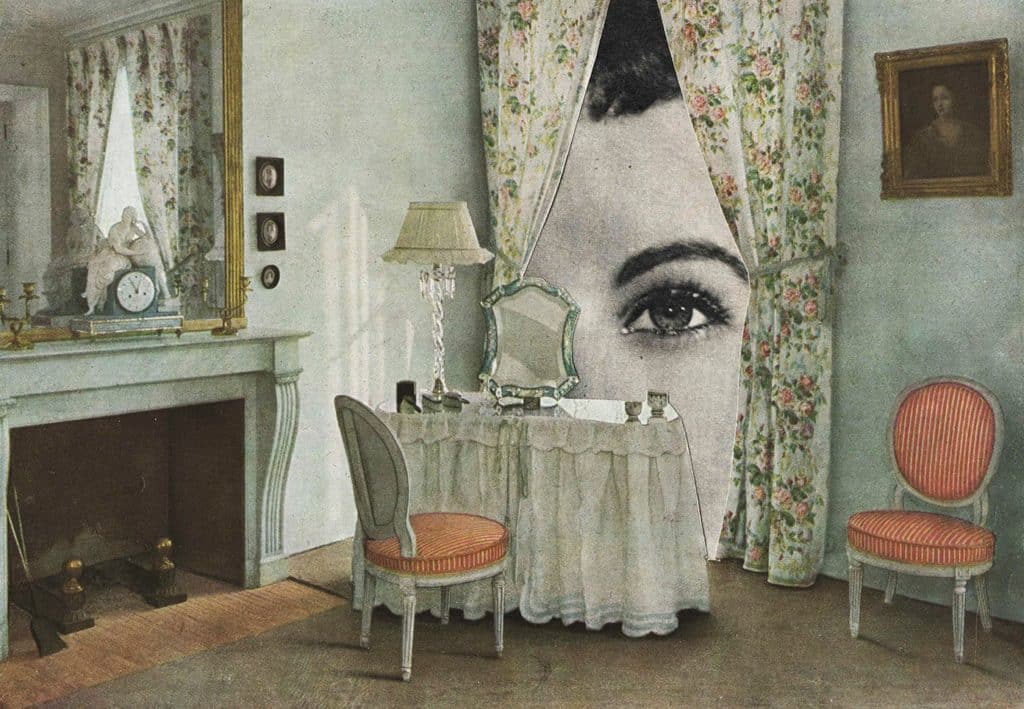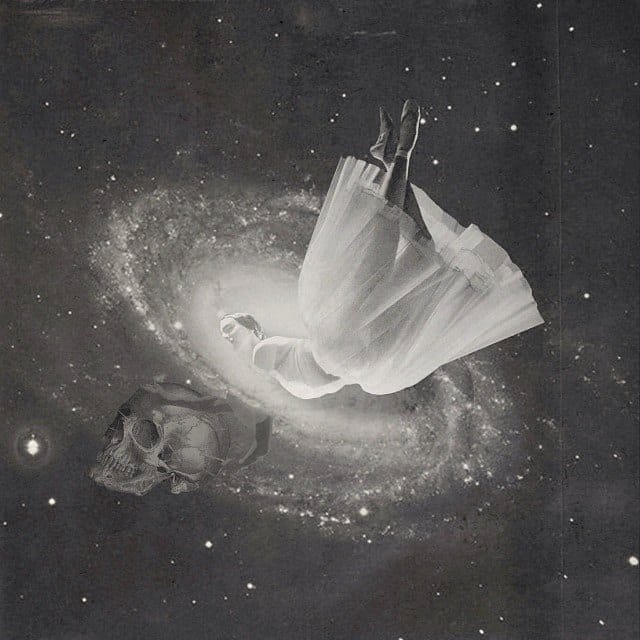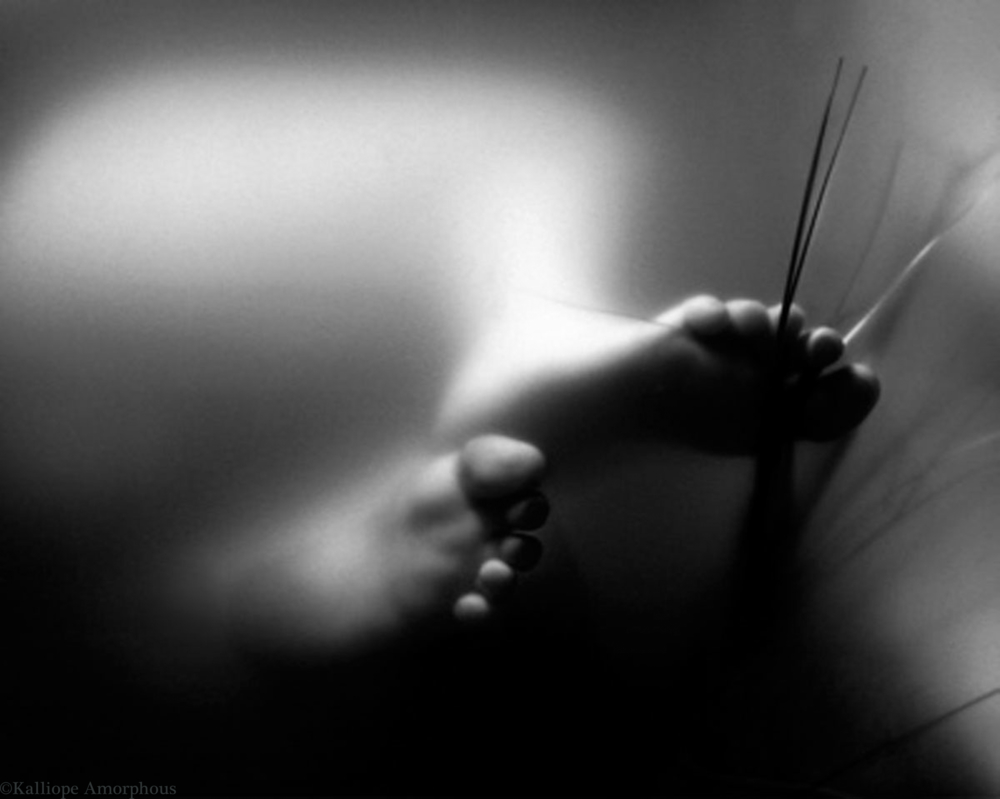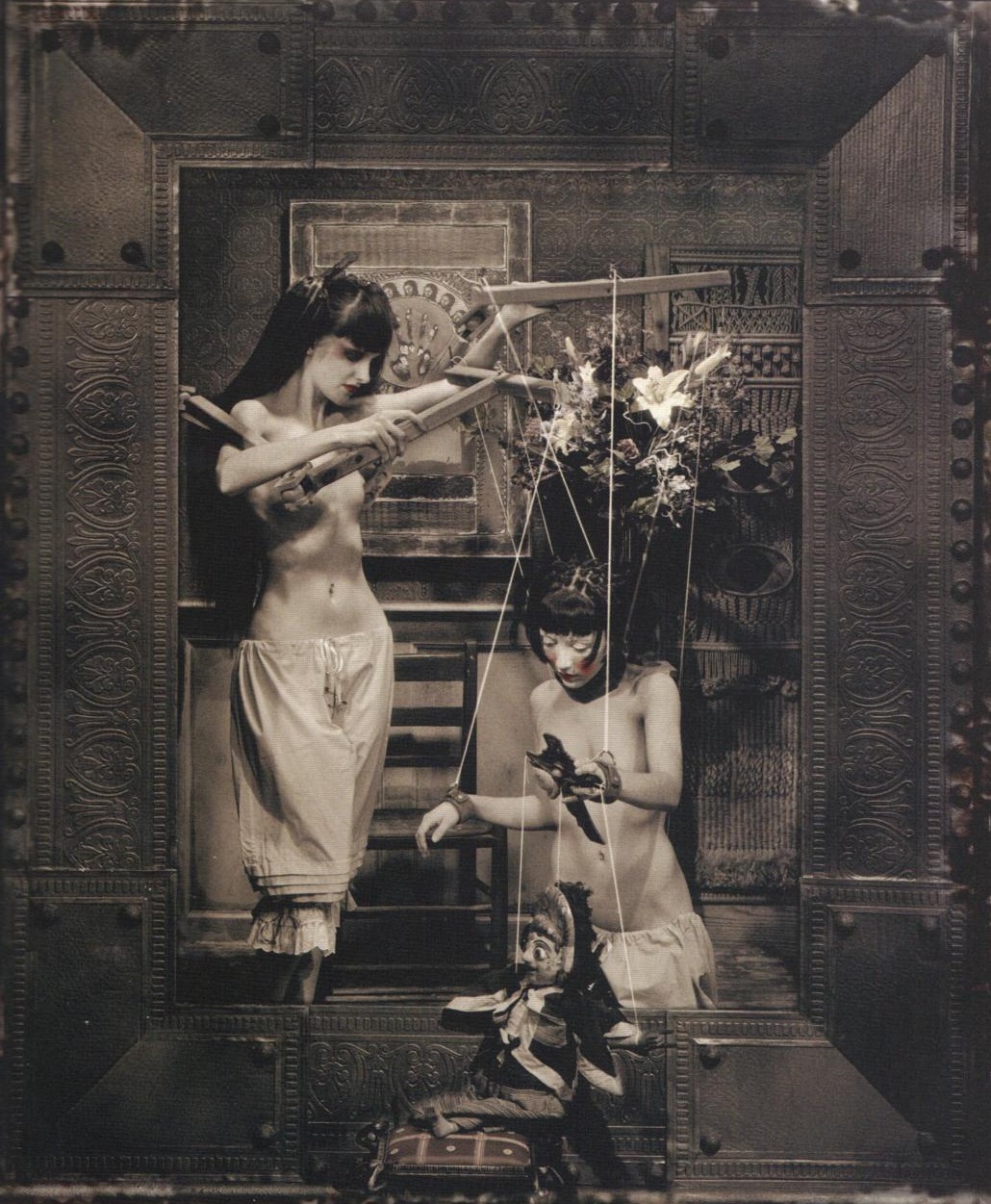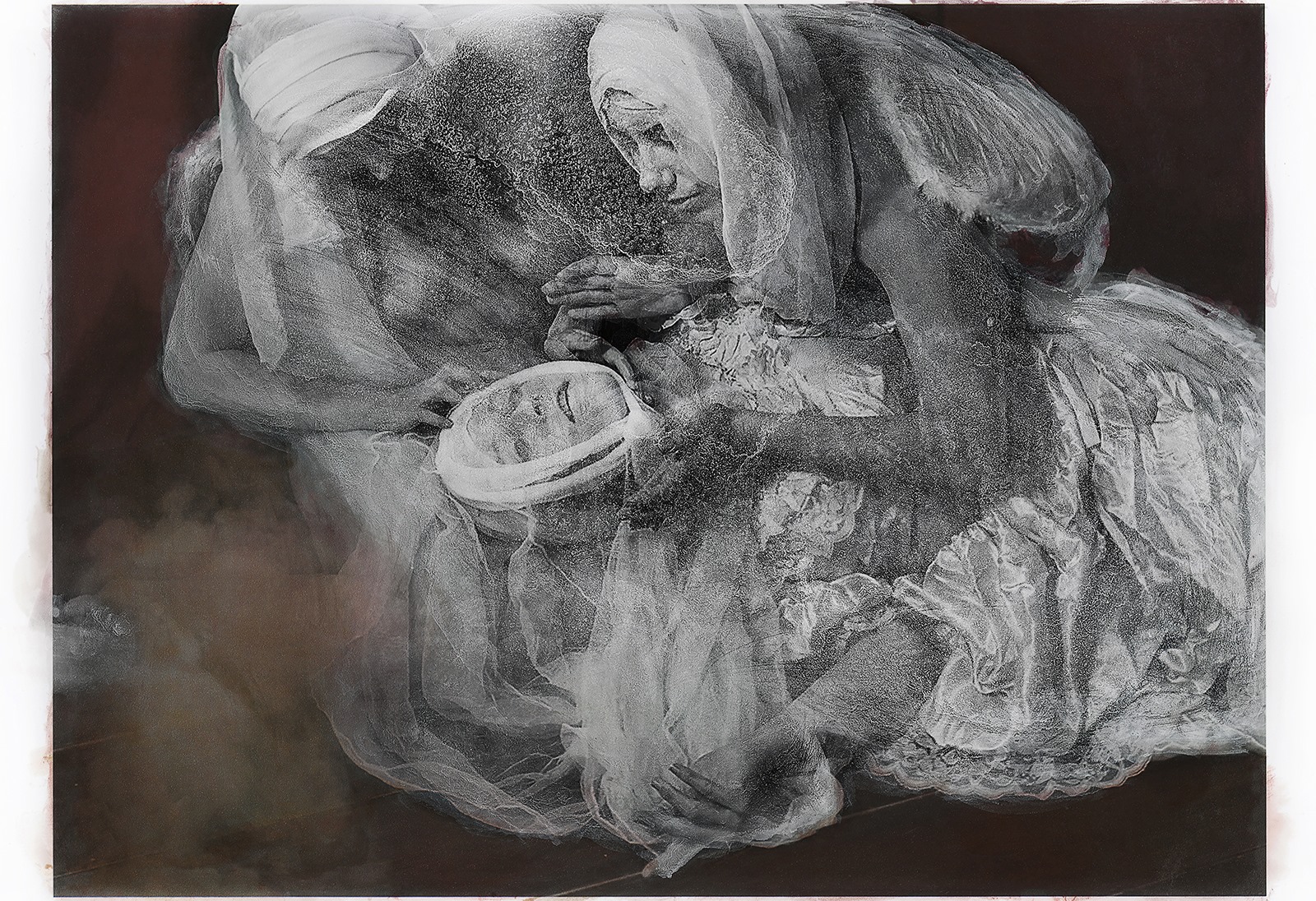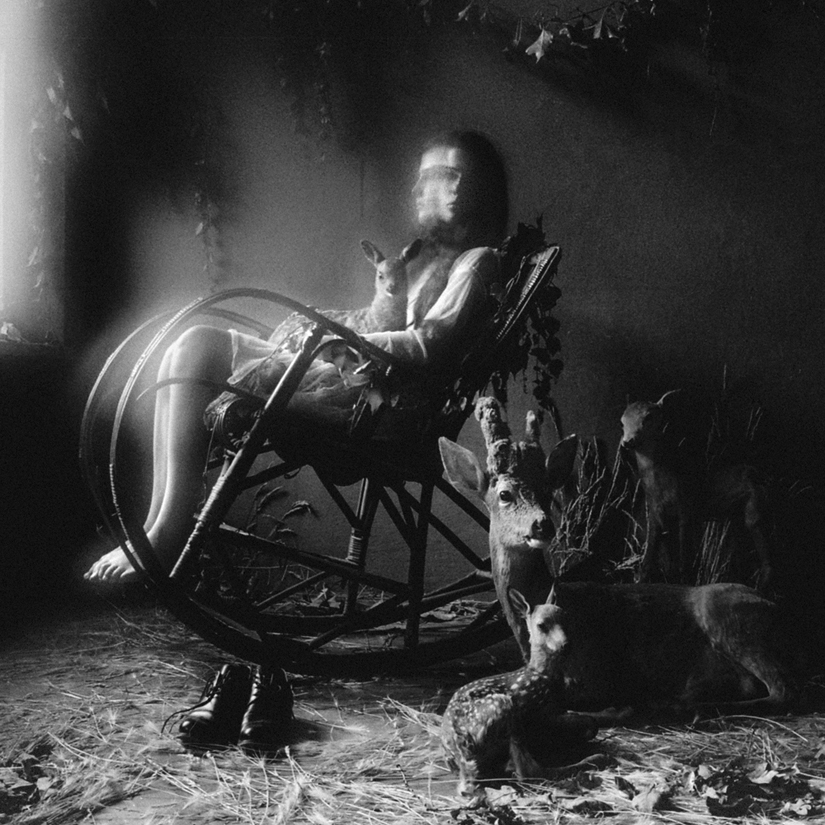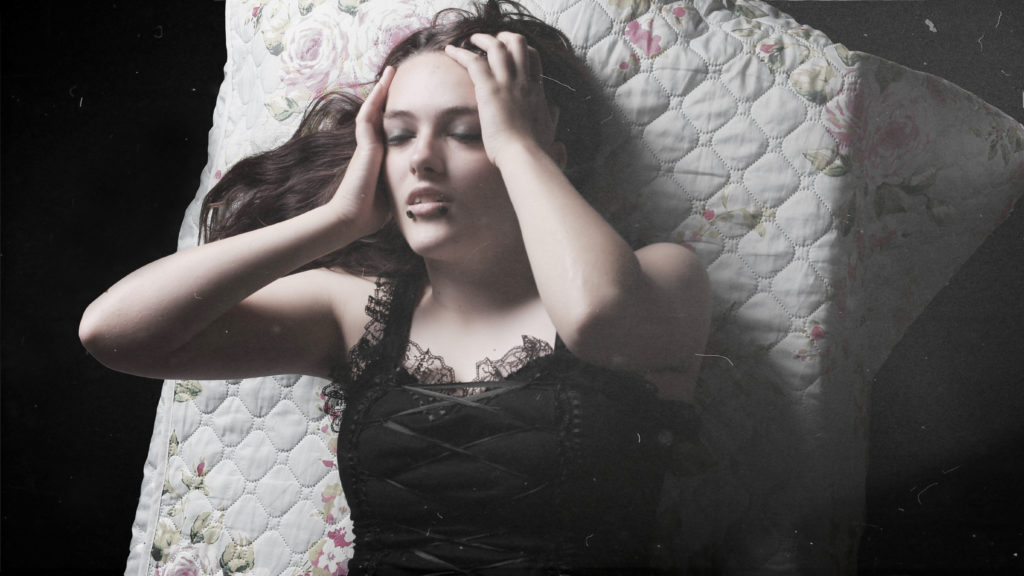Kalliope Amorphous’ haunting, evocative work encompasses conceptual, ethereal self-portraits exploring the unconscious mind, the plurality and elusiveness of the self, the realm of dreams, memory, archetypes, our ephemeral nature, trauma, the deconstruction of identity, and states of isolation and transcendence.
DM: A significant part of your artistic work consists of conceptual self-portraits – particularly diaphanous self-representations. Marina Warner mentions that mirror reflections can be associated with both integration and estrangement; this is also true of self-portraits, through which the dichotomy between self and other can be explored. What impact have your self-portraits and the process of doubling had on your self-image?
KA: That analysis resonates so strongly with my process and it is funny you mentioned it, because I am currently reading “Phantasmagoria” by Marina Warner. It’s always been a very therapeutic but also difficult process for me, specifically because I have always struggled with both my own self image and the themes that I explore (isolation, death, and time). Self portraits allow me to step outside of the miasma of my own mind and look at the emotions that I struggle with as something fixed and tangible. In the past, I used to say that I didn’t view these as self portraits and that I was essentially playing out characters. I think the greatest impact is that, after over a decade of doing this work, I can finally see and admit that all of the expression is a reflection of myself and my inner world.
DM: Do you go through a process of mental self-examination when you give birth to the concepts behind your photographs, or do ideas (sometimes) come to you spontaneously?
KA: It’s almost always spontaneous, because I just love to work that way. Usually I will start with a very basic theme or idea and let it unfold. I try to work from my subconscious and put my analytical mind on pause as much as possible.
DM: There is a certain fluidity in your depictions of the Self as something elusive, that flows and changes shape. This is reminiscent of definitions of identity as a collection of different perceptions, impressions, and thoughts. Virginia Woolf said “I am rooted, but I flow”, which can be interpreted to refer to the fluidity of identity, as if parts of us are fluid, ever shifting, but there is also a more unshakable core, something immutable that makes us who we are. As Hume says, when you enter most intimately into what you call yourself, what do you find? Can you convey that in photographs? To quote Whitman, “There is, in sanest hours, a consciousness, a thought that rises, independent, lifted out from all else, calm, like the stars, shining eternal. This is the thought of identity — yours for you, whoever you are, as mine for me.” Do you feel that photographs can capture the essence of your Self, if you believe there is such a thing?
KA: These are wonderful quotes and the quote by Virginia Woolf is one of my favorites. I think that the pursuit of capturing that essence is why many artists are driven to create. For me, I believe that there is an ego and personality based version of self as well as a higher Self that can encompass universal human experience. I try to vacillate between the two of them and hope that somewhere between them there is something that feels like a glimpse of truth, whether my own truth or something more universal. In the same breath, I don’t think it can ever be captured, but the desire to try is what drives the need to create art.
DM: What elements and themes would you say are intrinsic to your shots?
KA: Isolation, separation, the passing of time, loss, birth, decay, female power, and the potential for a light at the end of the tunnel. There always tends to be a darkness, but I think there is also a sense of hope.
DM: Your inner world seems to be your main inspiration; do you have any particular external muses as well?
KA: I am very inspired by music, nature, and animals. These things all elevate my mind and spirit and inspire me in different ways. I am also inspired by the human spirit in general, specifically the struggle to triumph over adversity, to come into its own power, and to love.
DM: Does your artistic identity seep through in everyday life?
KA: There isn’t really a separation at all. My everyday life has been devoted to art for a very long time and I am fortunate that I don’t have to wear any other hats or suppress any aspects of myself.
DM: You have previously emphasised your hyperawareness of the passing of time and the fragile nature of our lives- preoccupations which are also reflected in your work. Do thoughts of the ephemeral nature of human beings depress you, or do you feel reconciled with this aspect of life? Does art have an influence in this sense?
KA: I don’t think I feel reconciled with it. My default nature is a bit melancholy and making art is my attempt to reconcile with all of that. Going into a session to create new work, no matter what the form of art is, always feels like going into a room with death. Roland Barthes’ “Camera Lucida” really resonates with me in the way that he discusses how photography and death co-mingle. It happens when I practice painting or music as well. Whatever the art form is, there are always a lot of intense emotions swirling around. This prevailing sort of existential dread coupled with awe at the beautifully fleeting parts of our existence are what drives me to create.
DM: Some of your self-portraits revolve around inner duality and contradictions. The inner conflict arising from the multitudes within the self has been considered by some artists to be the essence of creativity. What do you think about this?
KA: I think this is very true. I have always felt frustrated by the limits of only being able to express one thing at a time, as if my body is too small to express what I want to express. I think the doubling and twinning that I am constantly drawn to feels like a way to make more room somehow.
DM: What is your view regarding the notion of soul and what do you believe is the role of art in the definition of soul? Do you believe art can lead to spiritual enhancement?
KA: I think that art can bring us very close to the notion of the soul and I feel this is why being in a museum can feel akin to a sort of religious experience to many people. Based on what I have personally experienced, I believe that the soul is that which contains all possibilities and is enduring. Art can give us a glimpse of that which contains all possibilities and is enduring, so I think they are very intertwined.
DM: Memory is a theme you explore in your photographs as well. How far back do you go in your creative process? Do childhood memories play any role in your work? If not in an obvious way, perhaps only symbolically, as a form of inspiration?
KA: Specific memories from my childhood don’t play a part, but it’s more of a vague interpretation of the emotions connected to those memories or to certain times. I was a quiet, sensitive, creative, bookworm as a child and I never related to other children because I felt like more of an adult. I didn’t fit in at all and was ostracized and bullied, so I think some of the themes of isolation and otherness probably began with those very early memories. I do cull a lot of symbolism from early memories, traumas, and experiences.
DM: Do you ever feel pulled towards a different aesthetic, narrative, or conceptual concern than what has become your signature style?
KA: I think that my signature style for my self portraits will always have a certain aesthetic, because it’s a reflection of my inner landscape and I don’t think I will ever be finished exploring and working out certain themes. I do gravitate toward different aesthetics in my other bodies of visual art though.
I have an ongoing series of New York City street photography, which is a different sort of narrative and aesthetic. Still, it does retain a certain feel that can compare to the mood of my self portraiture work. My street photography seeks to do the same thing my self portraiture does, but through a different narrative. Again, it’s the passing of time, the fleeting beauty, a sense of wistfulness. I also work with glitch art, which is very different aesthetically, but explores themes of synchronicity and decay. Even in my olfactory art, those same themes are there. The aesthetic definitely spills across all of the different art forms that I work in.
DM: What are some other themes you would like to explore in your future work?
KA: It has been a little while since I have done a new series, but as I approach my fifth decade, I find myself thinking a lot about aging, specifically how women confront aging. This is a theme that I have been thinking about lately, because the physical aspect of my self portraiture will naturally change as I age and I have wondered what that might look like or mean for me. I don’t have any idea what that might look like, but I have a feeling it will be an integral theme for me in future work. My Glass Houses series is also something that I have wanted to expand on. The flexible mirrors are something I love to work with and I am definitely going to dive deeper into them in the future, because I feel like I have only scratched the surface.
Links:
Website: https://www.kalliopeamorphous.com/
IG: https://www.instagram.com/kalliamorphous/













